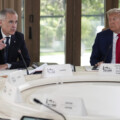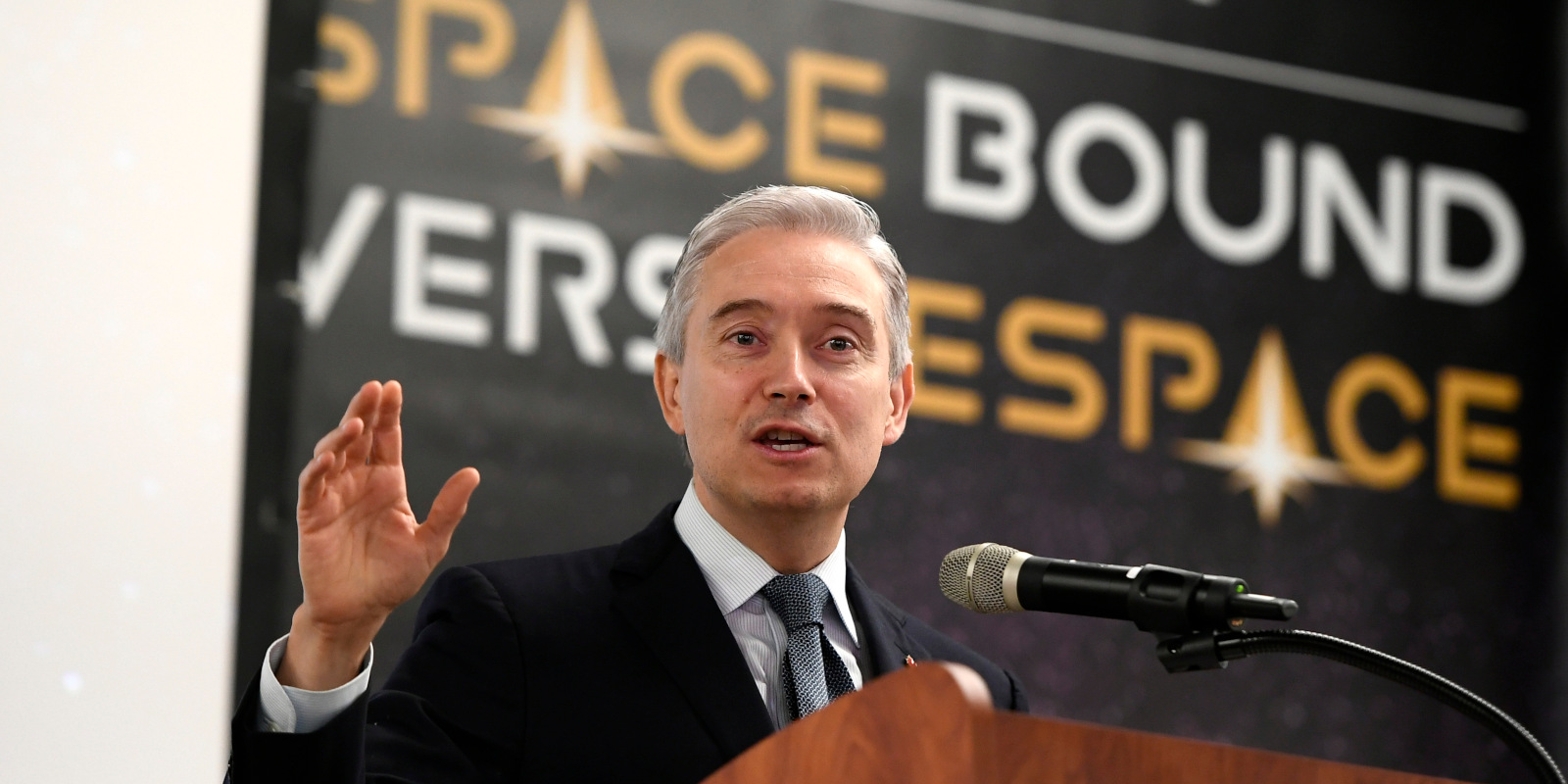This episode of Hub Dialogues features host Sean Speer in conversation with Robert Asselin, the senior vice president for policy at the Business Council of Canada and a senior fellow at the Public Policy Forum and the University of Toronto’s Munk School of Global Affairs and Public Policy, about the need to reform Canada’s science and technology policy in order to boost innovation and productivity.
You can listen to this episode of Hub Dialogues on Acast, Amazon, Apple, Google, Spotify, or YouTube. The episodes are generously supported by The Ira Gluskin And Maxine Granovsky Gluskin Charitable Foundation.

SEAN SPEER: Welcome to Hub Dialogues. I’m your host, Sean Speer, editor-at-large at The Hub. I’m honoured to be joined today by Robert Asselin, the senior vice president for Policy at the Business Council of Canada, a senior fellow at the Public Policy Forum, and the University of Toronto’s Munk School of Global Affairs and Public Policy, and a senior advisor to prime ministers and finance ministers, including the current Prime Minister Justin Trudeau.
I should say that Robert is a good friend and a regular collaborator on policy papers about innovation, productivity, and technology. Even though we’ve worked for different governments, few people have influenced my own thinking about public policy, including the nexus between economics and geopolitics, more than him.
I’m grateful to speak with him today about some of these issues, including a paper that he published with a Public Policy Forum in September 2022 about reconceptualizing the institutions that comprise Canada’s science and technology architecture. In effect, as listeners will hear, Robert has argued that our current mix of public institutions is not well suited to carry out the type of industrial policy that he thinks Canada needs for an era of geopolitical and technological competition.
Robert, thanks for joining us at Hub Dialogues.
ROBERT ASSELIN: It’s great to be with you, Sean, I appreciate the invitation.
SEAN SPEER: We’re speaking on the morning of January 11th. We published an article by you this morning at The Hub, incidentally, that both makes the case for industrial policy and challenges a lot of the commentary about industrial policy. Let’s start there. Robert, why did you feel the need to write this article at this point, and what do you think the critics of industrial policy are getting wrong?
ROBERT ASSELIN: Sean, both on the why and the what of industrial policy, I feel like we need to get past the caricature aspect of the debate. I can explain a bit about what I mean by that. On the why, I think this is an enduring debate that I guess goes back to the ’80s or even the ’70s, in a very simplistic framework, which is free market versus big government. In other words, industrial policy should be about no government intervention at all or a lot of government intervention. To me, it strikes me as not the right way to think about it. I think there’s a reasonable middle where, obviously, markets and government don’t operate in universes that are fundamentally different or in parallel.
Also, that the debate needs to move on to what works, and we know what works. We’ve seen clear success cases in industrial policy. So I feel that’s where we need to move the debate. The other thing I’ll say, Sean, is that, as you and I have thought about and written about, there are political economy goals that are going to be there, whether it’s climate change or, more and more now, national security, given the new geopolitical reality. In these instances, I think one has to think about how best to do industrial policy, how best to meet these goals, these political economy objectives, in a way that is not detrimental or negative to market-driven outcomes.
I think this is where the debate needs to go, and there are specific issues that need to be addressed and there are policy instruments that need to be debated, but it seems to me that we have to go a bit beyond the caricature aspect of this debate.
SEAN SPEER: We’ll get into some of those policy instruments and indeed institutional reforms that you think ought to underpin a modern industrial policy, but before we get there, Robert, let’s take up what you described as the caricature of industrial policy in a lot of the commentary that we see from think tanks, columnists and others. A common criticism that you address in today’s piece for The Hub combines the idea that any market intervention risks succumbing to political forces and, in any case, the government isn’t capable of anticipating market developments.
Now, we know each other well. One thing that strikes me, Robert, is that, unlike a lot of proponents of industrial policy, you aren’t ignorant of these arguments or dismissive of these concerns. In fact, you have your own critiques of state capacity and the tendency towards short-term politics. In light of that, why do you think, Robert, that industrial policy, as you conceive it, can be successful? How does it seek to minimize these risks that you yourself would acknowledge?
ROBERT ASSELIN: Because we have clear cases where it has been successful—and I think there’s a misunderstanding or a lack of sophistication about what works and what doesn’t in the current debate—I would argue, for example, that when you look at the U.S. space sector or defence sector over the last 60, 70 years, it’s pretty evident that policy instruments that were used and the policy design of industrial policy has been quite successful. And no, it’s not subsidies, it was mostly around R&D, industrial research, and innovation. That’s how you get to good outcomes.
As you say, Sean, there are many ways government can do interventions in the economy that will be detrimental. We’ve seen a lot of cases of that. I’ve been, for example, very critical of the way that the Government of Canada, not just this current government, but over the last half-century, has thought and conducted industrial policy. Part of the reason I think we’ve been so bad at it is we never had really to do it well, given we were never threatened, we’re a very gifted country in terms of natural resources and our trading relationship with the U.S. Now, these things have changed fundamentally and we need to rethink about how we go about our own economic competitiveness going forward.
At the end, I think one has to be clear about what problems are we trying to solve here. The main problem we’re trying to solve is an economic one, a growth one. Where will growth come from and what is the role of the state of governments to help nurture it? Not in a way that is overwhelming or overreaching, but in a way that is—and we’ve seen successes—that is a good conduit to long-term growth.
SEAN SPEER: That’s a good segue, Robert, to another line of criticism of industrial policy that I wanted to take up. That’s the tendency for industrial policy to have a mix of different objectives. It can become a bit amorphous, from industrial policy for creating jobs, to industrial policy for reducing regional disparity, to industrial policy to advance climate goals, and on and on and on. Your objectives by contrast are quite narrow and specific. You want to boost innovation, productivity, and economic growth. Do you want to talk a bit about the underlying goals that are motivating your thinking and why you think an industrial policy model can help to achieve them?
ROBERT ASSELIN: Specifically, Sean, what I’m mostly obsessed about—and you and I obviously go back on this because I think we share a similar diagnostic—is building this bridge between intellectual capital and private firms or markets. This is what I find we need to be focused on. It matters a great deal in an economy that is increasingly driven, where growth is increasingly driven, by intellectual capital. How you nurture, make sure that all these investments in public R&D, in education, in the talent that you have in your country, translates into economic outcomes.
It occurs to me that we’ve been very unintentional about doing this, making sure this happens. Now, is it simple? No, it’s not. This is mostly why I focus so much on the architecture of science and technology because I think that’s where it needs to emanate mostly. So what is really important again is policy design and policy instruments. I feel that when one thinks about industrial policy, one needs to think about it specifically in a very sophisticated way. How you build these policies so that they are effective. You and I have studied the DARPA model. We know it’s been effective. Some have reservations about whether it can be exported to other countries and even to other sectors.
We now know in the U.S. that it serves as a model for many sectors. President Biden just created the ARPA-H for health innovation. There’s ARPA-E for energy. There are other models in other countries that serve these purposes, where this bridge where we need to commercialize R&D and absorb it in private firms and scale these companies is where we need to, I think, focus on.
SEAN SPEER: Just as an aside, Robert, as I was preparing for today’s conversation and reading some of the materials that you’ve produced over the past 12 months or so, I was struck by how passive our R&D model is in Canada. That is to say how much it is carried out without some kind of overarching set of priorities. I contrast that with a speech that you cite at some length in your latest piece for us at The Hub by the U.S. commerce secretary, who outlines some pretty specific goals for U.S. economic policy that ostensibly then can be translated into public policy across a range of areas, including, but not limited to R&D spending.
I think if you put that question to the current government or the previous government for that matter, what are those clear objectives that are guiding policy-making, including with respect to science and technology, you’d get a lot of banal answers, but not the specificity that we see guiding U.S. policy.
Let me turn to another subject you take head-on in your latest piece for us, and that is the composition of industrial policy. That is to say, there’s a tendency to talk about industrial policy as narrowly about public subsidies, mostly to private firms. You argue in the piece that that’s the wrong way to think about it. It’s as much about getting institutions and mechanisms for public-private innovation partnerships right, as it is about subsidies or even the magnitude of public investment. Do you want to elaborate a bit on this point?
ROBERT ASSELIN: I guess when people say, government doesn’t know how to pick winners, the larger point in this is, as you say, the sectoral composition of the economy. What is meant by that is that it matters a great deal whether a country has healthy productive sectors by which they actually produce goods. Advanced manufacturing is really important because when one thinks about trade, for example, and current trade account deficits that we’ve had for the last decade or so, since the great financial crisis, we need to realize that we’re not as productive as we used to be.
There’s been a lot of bleeding in the manufacturing sector, for example. It’s not unique to Canada, but certainly, Canada, since the ’70s has seen this trend very clearly. The sectoral composition matters a great deal, and this is where it needs to be focused. Again, it’s not a question in economic planning, it’s more a question of how do you incent innovation to occur. Again, I go back to this bridge between public R&D on the public-private partnership side. Our science can be translated into productivity, growth, and future prosperity.
The reality is, Sean, when you look at the history of growth, and great economist have written about this from about 1870 to now, what has triggered growth is essentially technological innovation, and didn’t happen in a vacuum. It happened because private firms were able to create some capacity to innovate, and that emerged in great part, I would argue from the public R&D that was being done. For example, I’m very focused on the historical role that corporate labs have played.
If you look at Bell Labs, for example in the U.S., DuPont, these big companies that have these capacities that have now been left aside because it wasn’t lucrative enough, I guess, or too risky as an endeavour, that mechanism per se has not been replaced by something modern. This is why I think, on the science technology architecture of it, we need to recreate it in a matter of public-private partnership.
SEAN SPEER: Let me take up that point now directly, Robert. When we talk about economic growth, one increasingly hears various ideas about growth-enhancing policies, from conventional ones like deregulation or tax cuts to new ones like child care and housing. In your September 2022 paper for the Public Policy Forum entitled, “Growth Innovation and the Organization of Science Policy in Canada,” you actually make the case that one of the most important growth-enhancing steps that the government could take is the serious reform of public institutions dedicated to science and technology.
Do you want to elaborate on your argument? Why is organizational reform to Canada’s science and technology architecture so crucial to achieving higher rates of growth? What problem are you trying to solve?
ROBERT ASSELIN: First, I would say that policymakers need to acknowledge that science-based institutions are not just public goods, but there are essential economic enablers in the world of increased geopolitical competition. I think this is a really fundamental point people need to understand, which is that somehow we’ve been led to believe that science is its own silo and doesn’t matter for political economy reasons. Obviously, the world that we live in now is fundamentally different and there needs to be this fundamental recognition to start with.
Secondly, I think about the ways we do science, how we empower our best scientists and researchers to do frontier work on the most pressing challenges that we have and how we facilitate that knowledge transfer in the real economy. It’s central to how we have to conceptualize growth potential in our economy. In concrete terms, it needs to be a rebalance between fundamental research or curiosity-driven research, which is absolutely important and a huge driver of innovation, but a rebalance between this and industrial research at scale, which in Canada is almost non-existent. The other thing that we do very badly, as I said, is the transfer technology mechanism.
In other words, we have all these research chairs, university chairs, that produce great research, but somehow, it doesn’t translate into economic outputs and products and patents and intellectual property, which is where it needs to go. So we have to align our research strength with what our private firms need in a real economy. I find that the arm lengths science model that we’ve adopted since World War II is fundamentally inadequate in the circumstances we live in.
SEAN SPEER: Do you want to talk a bit about the types of institutional reforms that you’d like to see? I won’t ask you to go into any great detail about specific mandates, structures and budgets, and so on, but what are the principles or approaches that ought to be reflected in new or existing science and technology organizations?
ROBERT ASSELIN: To me, Sean, it’s mostly a question about incentives and what incentives people have to make certain things happen or not. Again, because our R&D architecture relies on academics pursuing their own research in a way that what matters is more citation and publishes articles in academic journals versus maybe IP creation, intellectual property creation, I think that leads me to believe, and you as well as we have written, that those are the wrong incentives. Or that those are the incentives that need to be changed so that we have better outcomes on the economic front.
Again, I’m not saying that researchers’ only objectives should be industrial policy, but certainly, when you think about all the investments we make in public R&D and researchers in universities, it seems to me that other countries have done much better. It seems just normal to be a bit more intentional about the incentives you are creating for people to make the right things. When there was a pandemic, the reality is the incentive was clear and everybody turned their attention to it and we solved the big problem in a very rapid time with vaccines.
Climate change is another example. We’re going to need to accelerate the pace of technological innovation if we want to get ahead of this problem, which obviously we’re far behind and it seems to me that the incentives are not there necessarily on the research side to get us where we need to be.
SEAN SPEER: Implicit in your comments is the notion that we’ve decentralized too much research priority setting to the interest and preferences of individual academics, and that we should have a set of national priorities and science and technology programs should tilt towards more public-private laboratories and projects and instead of what sometimes referred to as an “investigator-driven model.” Why do you think we ought to be more prescriptive in how science and technology funds are allocated and place greater emphasis on the private sector and away from university-driven research?
ROBERT ASSELIN: There’s just this urgency I find on productivity growth, on the need to drive economic policy with clear objectives and technological innovation. It seems that it’s almost like the two are disconnected from each other. There’s an urgency to think about research and science, again as I said, and the institutions behind it as enablers of economic growth. I think most countries that do industrial policy well get this. I’ll just give the example of the Netherlands—a country about half the size of New Brunswick that went through a very difficult period over their history and realized they had to produce a lot of agriculture in a land that was, compared to Canada, very, very small.
They built this R&D architecture around precision farming with universities being integrated with private firms. Today, the Netherlands is the second- biggest world exporter of ag-food. Those are the example we need to think about in that it doesn’t happen by accident. There’s attention and there are policy designs and policy instruments behind these things happening. I find Canada has been very complacent when it comes to thinking about these things.
SEAN SPEER: I’ll just say in parentheses, Robert, it’s been fun and exciting to see your thinking evolve and take shape on these issues. In effect, what I’m hearing you say is that we ought to put public R&D in the service of some overarching national goals, particularly with respect to economic growth and productivity, and stop thinking of it as, for all intents and purposes, a dedicated financial entitlement for universities and university researchers. They’re going to be a crucial part of an overall R&D or science and technology strategy focused on national goals. But they have to be integrated into a broader framework which has been missing for some time.
Let me ask you a question that we’ve thought and talked about a lot, and that’s the potential trade-offs between incremental versus more transformative or radical innovation. You can regularly read these arguments in favour of incremental innovation and building on existing ideas and technologies. I know a Global Mail op-ed about a week ago that made that case. Of course, that’s true, but it strikes me as banal. In any economy, most progress is going to be incremental, but that incremental progress ostensibly rests on something.
I think, as you’ve said a couple of times in this conversation, it rests on transformative, step change progress in the form of major discoveries, breakthroughs, and then ultimately commercialization. Do you want to talk a bit about how you think of these questions and how they may manifest themselves in public policy?
ROBERT ASSELIN: I just want to say first, I’ve come to think about it almost as a cultural problem in a sense that when you look at breakthrough technologies and what has enabled it—you look at the Sputnik crisis in the U.S. in the ’50s, Russians beating Americans to the space, you look at Israel and cyber security, you look at Germany and advanced manufacturing during the wars and after the wars—they were driven by real threats. I again go back to my complacency narrative that Canada, because we’ve been very protected somehow by external forces in Canada, we’ve never felt really threatened to think that way.
It does require change in institutions, but it does require, in my view, a big change in the way culturally we think about breakthrough discovery. As for the role of public policy, I think the policy design to get to breakthrough technology—you and I have written this paper on why we think we need an advanced research agency and what are the imperatives behind it to produce some outcomes—it’s important.
But I think on the outcomes of breakthrough technology, Sean, to state the obvious is that, if you really want growth to happen, if you want productivity to happen, you can’t just be happy with incremental innovation. You need these breakthrough technology innovations, and history is there to prove it. I don’t see why Canada with our bench strength on human capital on talent cannot be a country where we think of ourselves as makers as opposed to takers of breakthrough technologies.
SEAN SPEER: I completely agree, Robert. Oftentimes it seems to be the case that when you hear the emphasis in policy public debates about incremental innovation, on one hand, it can sound sophisticated and, on the other hand, it really sounds like a self-rationalization for maintaining the status quo as opposed to thinking more ambitiously and more critically about our science and technology institutions, the incentives that you’ve talked about, and the set of reforms to aspire, as you say, to be a place that is capable of producing major breakthroughs.
ROBERT ASSELIN: Just on that, Sean, I think it’s important. Historically, we have done breakthrough discoveries. You think about insulin, you think about basically what is now 5G technology in telcos, which came from a lot of what we did in our corporate labs, under companies that don’t exist anymore. There were very important industrial components of our economy in the past. Again, I find a lot of people saying, “Oh, well, this is not something Canada can do. We can’t do the DARPA model, and it’s way too difficult to achieve.” I just don’t accept that argument. I think Canada’s as well positioned as any country to do this ambitious endeavour.
SEAN SPEER: Putting my cards on the table, Robert, I completely agree with you, and not just because we’re friends, that we need institutional reform to our science and technology organizations. But I also recognize that reform would be hard. It would take time and, as you’ve said a couple of times, there are outstanding questions about personnel and culture and how you cultivate the right kind of organizational culture.
Tyler Cowen, an American economist who shares our view about the need to fix the plumbing of science and technology organizations in the U.S. context, has argued for essentially going around pre-existing institutions by creating new ones in which you can cultivate a different and better culture. What do you think about that? How much of the problem can be solved by simply creating new small, more entrepreneurial science and technology organizations as opposed to trying to fix the current ones?
ROBERT ASSELIN: I think there’s a lot of merit in there, and you and I in essence proposed this with this advanced research agency that the government really is still struggling with and obviously still hasn’t come up with a clear answer on. I think it’s really difficult to change people’s behaviours and one can underestimate how—you and I have been in government—it is hard to change incentives in a system and have people really focus on what needs to be done. Part of it is a lack of clear objectives, I find. I personally think it’s not either-or. One thing I’m worried about in this debate is that people think that if we don’t do moonshots, we won’t achieve innovation. It’s not a either-or.
We know that, of course, moonshots are risky, and DARPA failed many times before it succeeded. In the U.S. for example, they have this great balance between the equivalent of our councils and these mission-driven agencies like NASA and DARPA and now ARPA-H. Seems to me that this balance is necessary for Canada. As opposed to creating, I guess, a niche program in a research council, I would prefer going with new institution, even as a pilot. The great thing about the DARPA model that has to be said, Sean, is that it is very rigorous on pulling the plug when things don’t work.
Our problem with our current institution is that, does it work? Does it not work? We don’t know because we keep doing the same thing all over, and there’s never a clear assessment of what leads to innovation outcomes. If you don’t have that assessment and say, “Okay, I’m not doing this anymore because it doesn’t work.” Then people will keep doing what they’ve been doing. This is just the way humans are. I think, again, I go back to short-term versus long-term, which you and I have been preoccupied with, policymakers need to understand the long-term game. The long-term game is about using different policy instruments if the old ones didn’t work.
Sean: I’d be remiss if I didn’t ask you a question about fiscal policy. We’re having this conversation in the middle of January. All things being equal, we will have a federal budget sometime in the next, say, eight to 12 weeks or so. The government finds itself in a difficult position in which it’s, on one hand, coming off the highs of emergency pandemic spending, and on the other hand, facing calls both from the general public to help mitigate the cost and consequences of inflation, and of course, it’s parliamentary arrangement with the New Democrats.
I won’t ask you to get into the politics of fiscal policy, but as someone who spent time working on federal budgets, just open up a general question: how should we think about the fiscal policy pressures facing the government and the right approach to navigating a pretty complex economic environment?
ROBERT ASSELIN: The one thing I want to say on fiscal policy, Sean, is I’m worried about this rosy view out there that everything is going to be okay. It was all right to spend 20 percent of GDP during the pandemic, and now no one has to be worried that this debt-to-GDP ratio will decline. But, of course, the world is not as simple as this in the sense that in the current projections, the government makes key assumptions. One, that there won’t be a major recession in the next five years.
Second, that inflation will come back to 2 percent quite rapidly and that the interest it pays on its debt bond yields will stay relatively low. But we know that these three things could be challenged in a very significant way. The reason in the ’90s we struggled, of course, with the deficit was because the primary deficit became difficult to manage because of interest rates that kept rising and we lost control of it.
There’s a scenario where inflation gets down to 4 or 5 percent but it still keeps interest payments quite high. I’m proud to say, I don’t want to give too much insight about it, but David Dodge and I have calibrated on a paper that will be coming out soon that looks at different scenarios on the fiscal trajectory with these parameters that I just explained. I think it will show that people should be more concerned about the health of the fiscal framework than the current assumptions out there are. It doesn’t mean that we are nowhere near the ’90s and that the sky will fall, but I think we need to be less complacent about the risk in our fiscal framework.
SEAN SPEER: Great insights. As there’s been throughout this conversation. We’ll have to have you back to talk about that forthcoming paper when it’s ready for release. In the meantime, I’d encourage listeners to check out Robert’s September 2022 paper, “Growth Innovation and the Organization of Science Policy in Canada.”
Robert Asselin, Vice President of Policy at the Business Council in Canada, senior fellow at the Public Policy Forum, and the Munk School of Global Affairs and Public Policy. Thank you so much for joining us at Hub Dialogues.
ROBERT ASSELIN: Merci beaucoup, Sean, I appreciate it.
Recommended for You

Rudyard Griffiths and Sean Speer: The future of news in Canada: A call for rethinking public subsidies

‘You have to meet bullying with counter-bullying’: David Frum on how Canada can push back against Trump’s trade negotiation tactics

‘Our role is to ask uncomfortable questions’: The Full Press on why transgender issues are the third rail of Canadian journalism

Need to Know: Mark Carney’s digital services tax disaster



